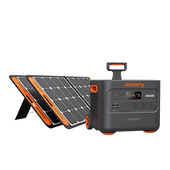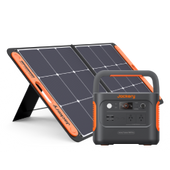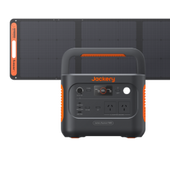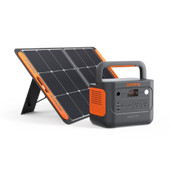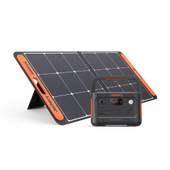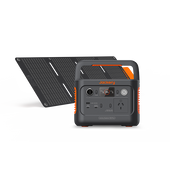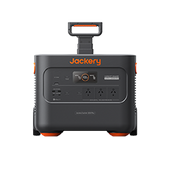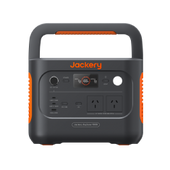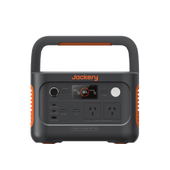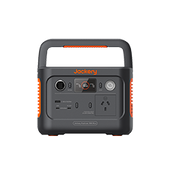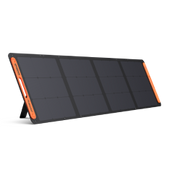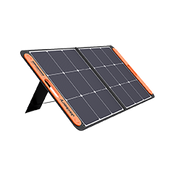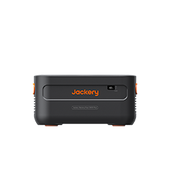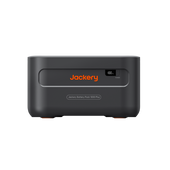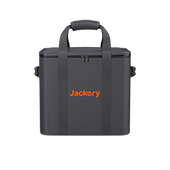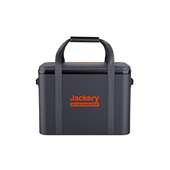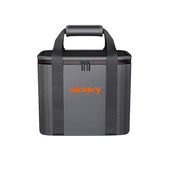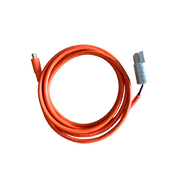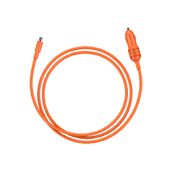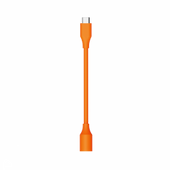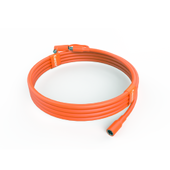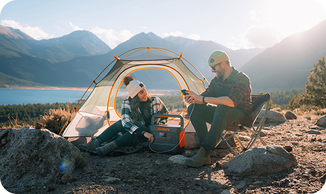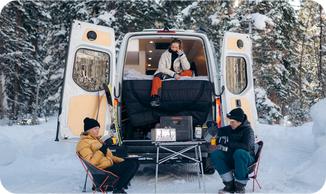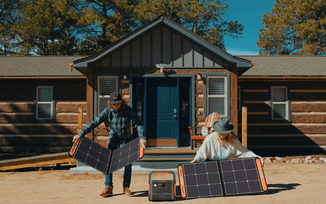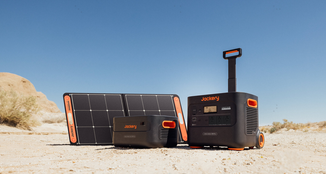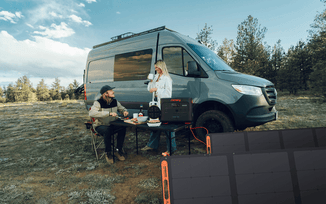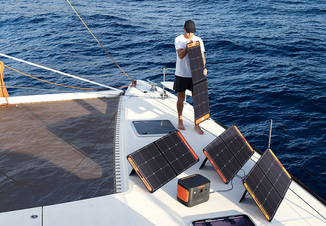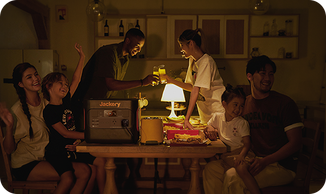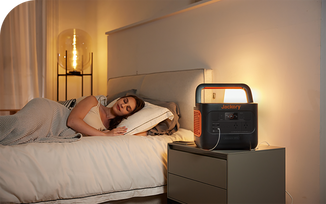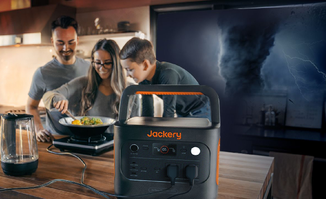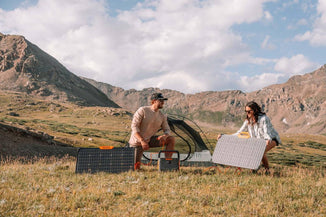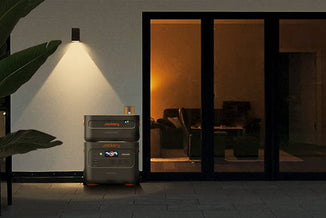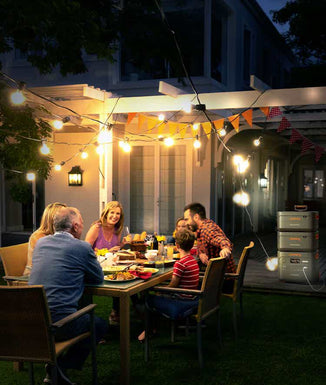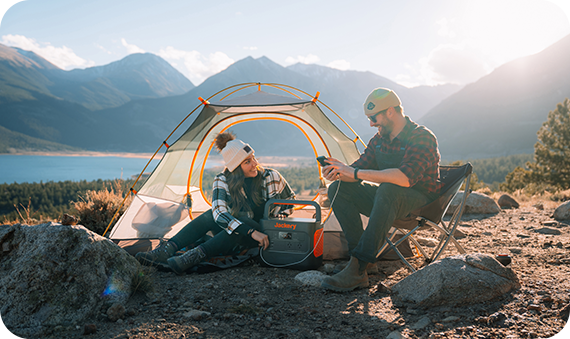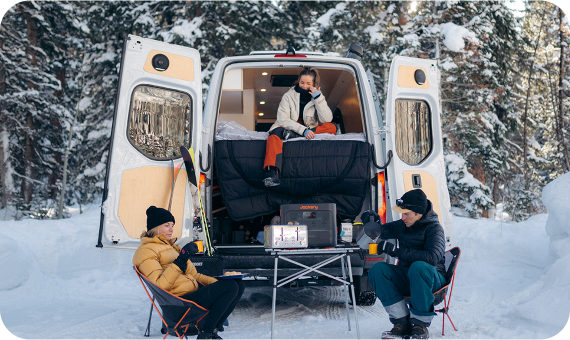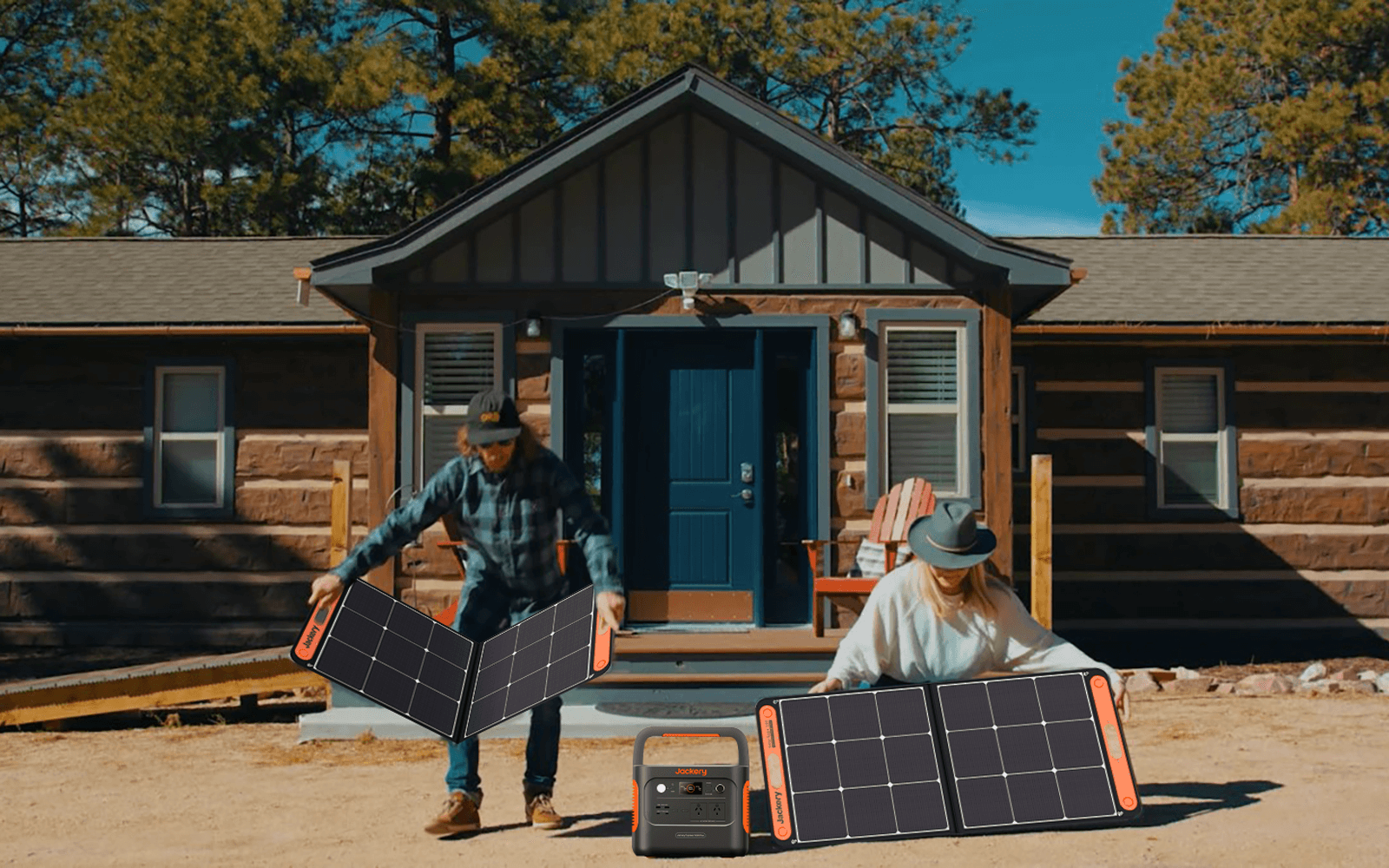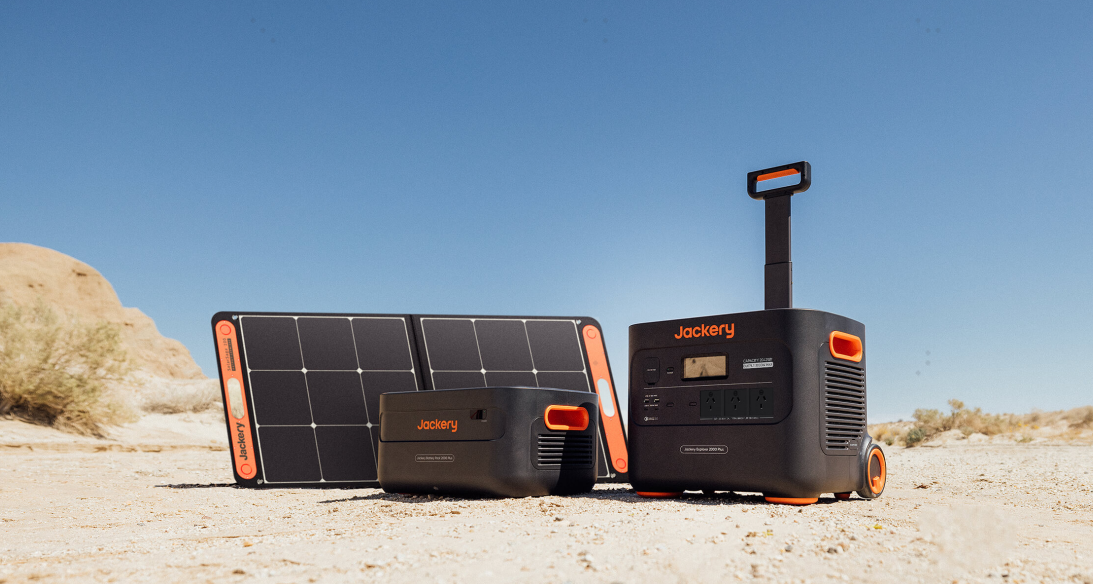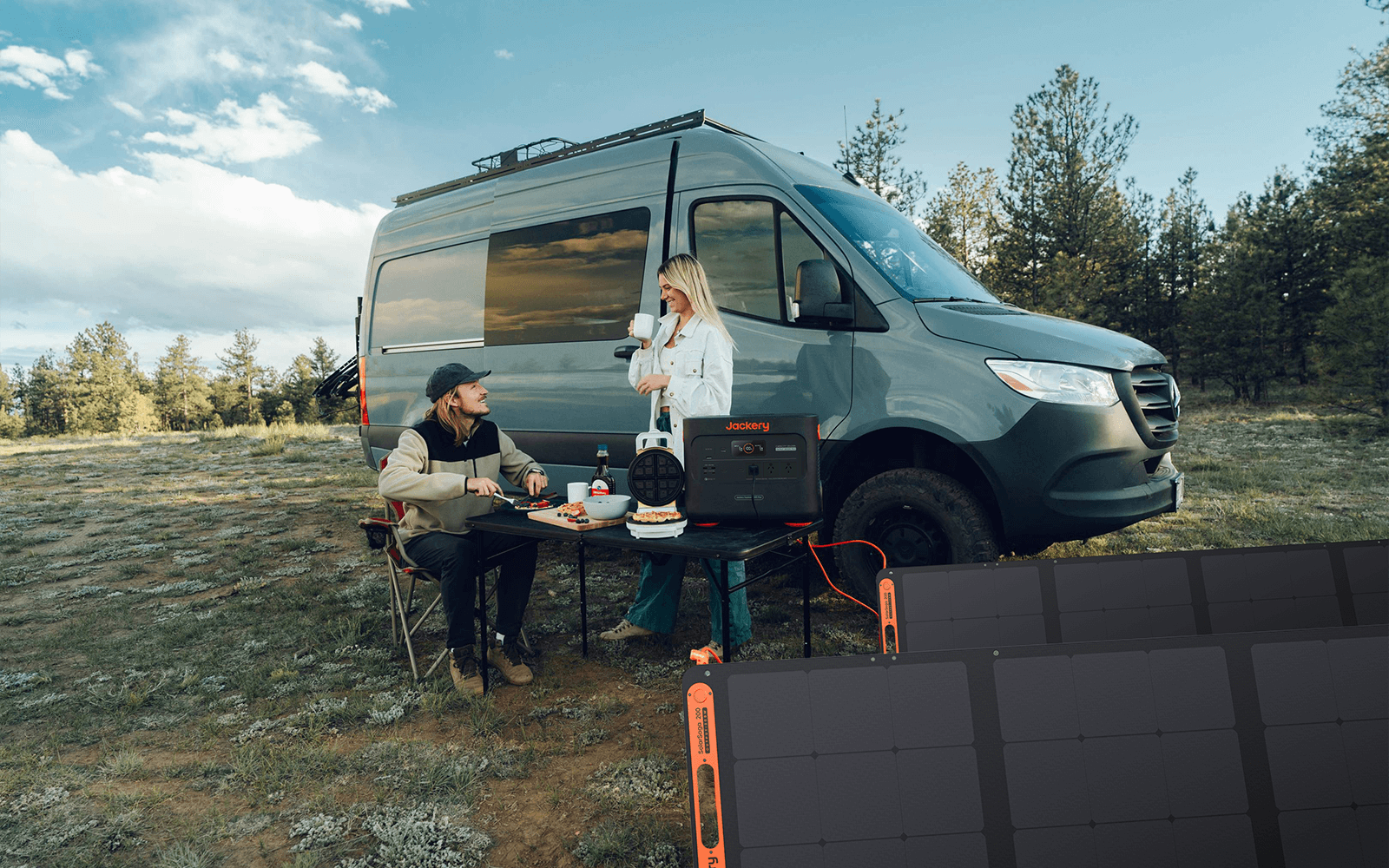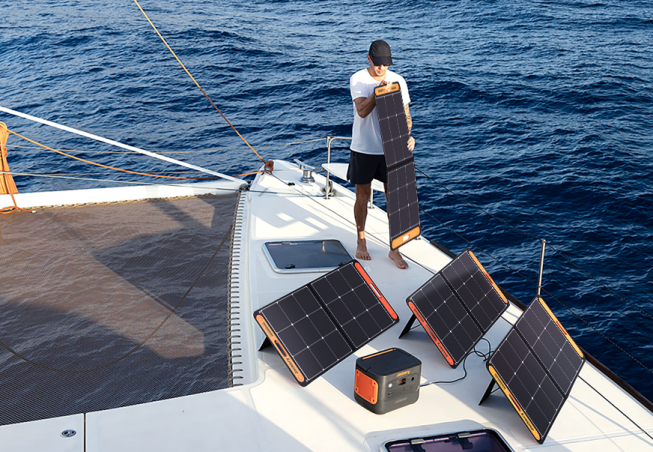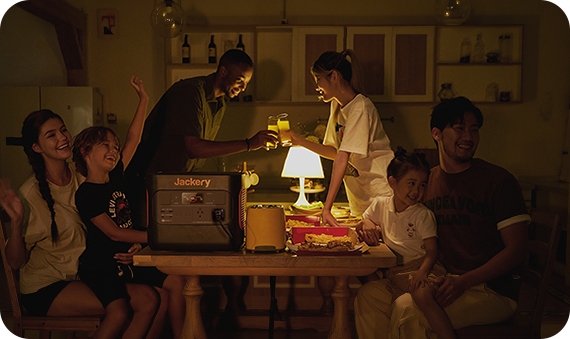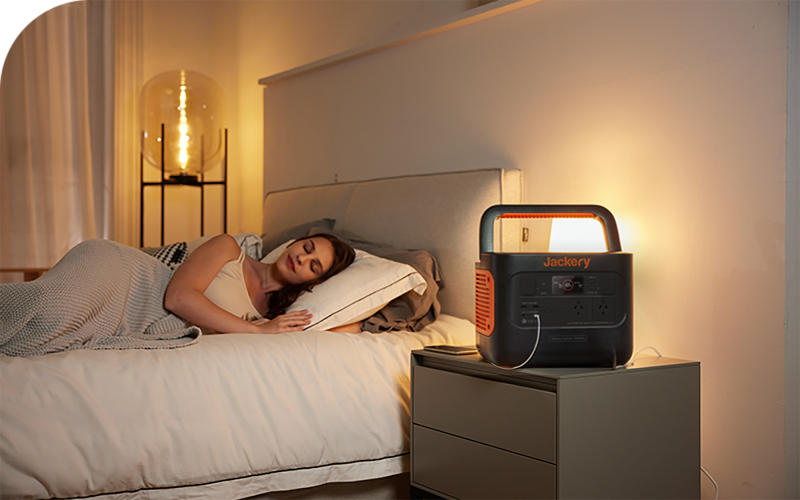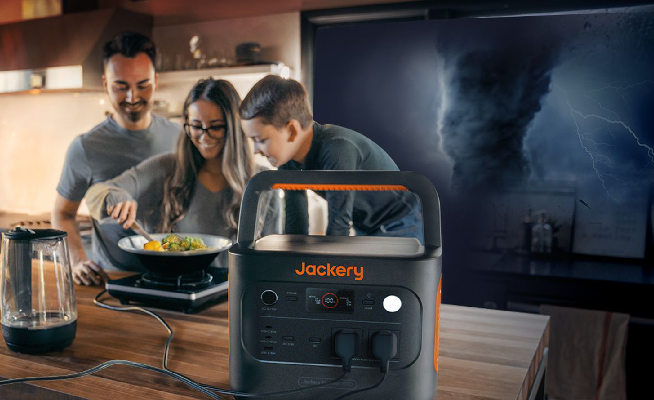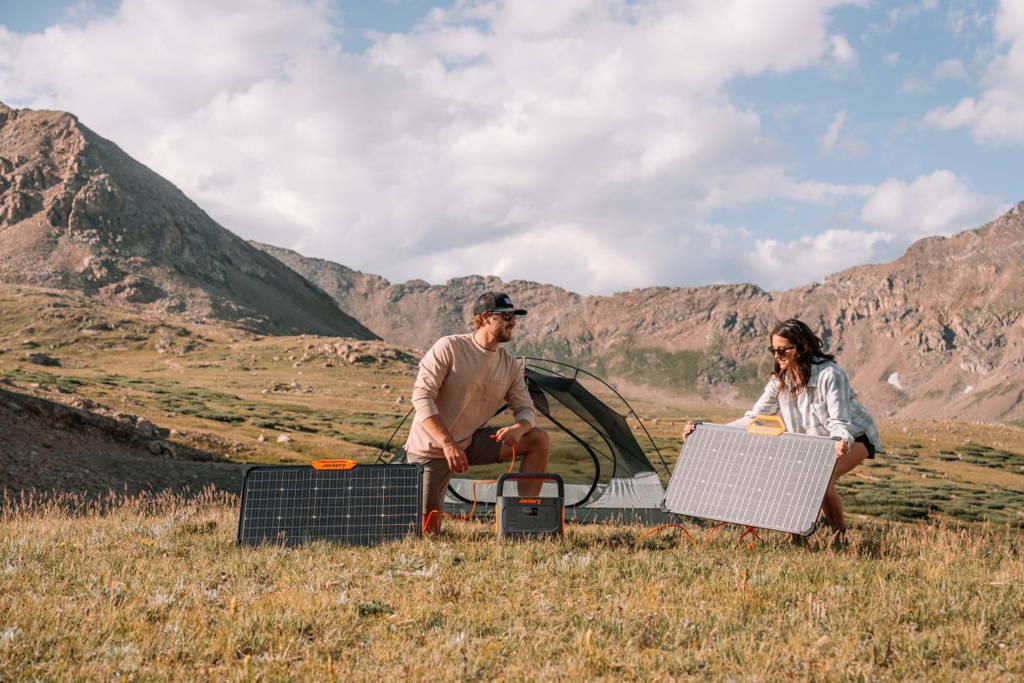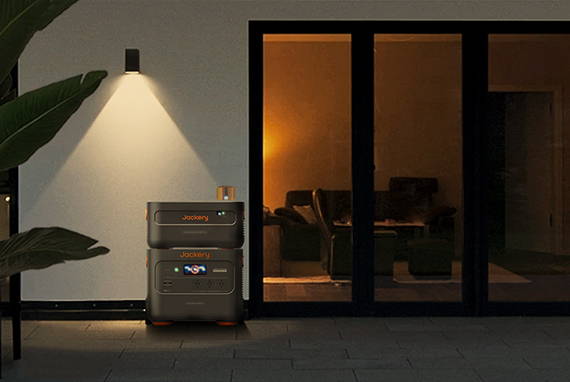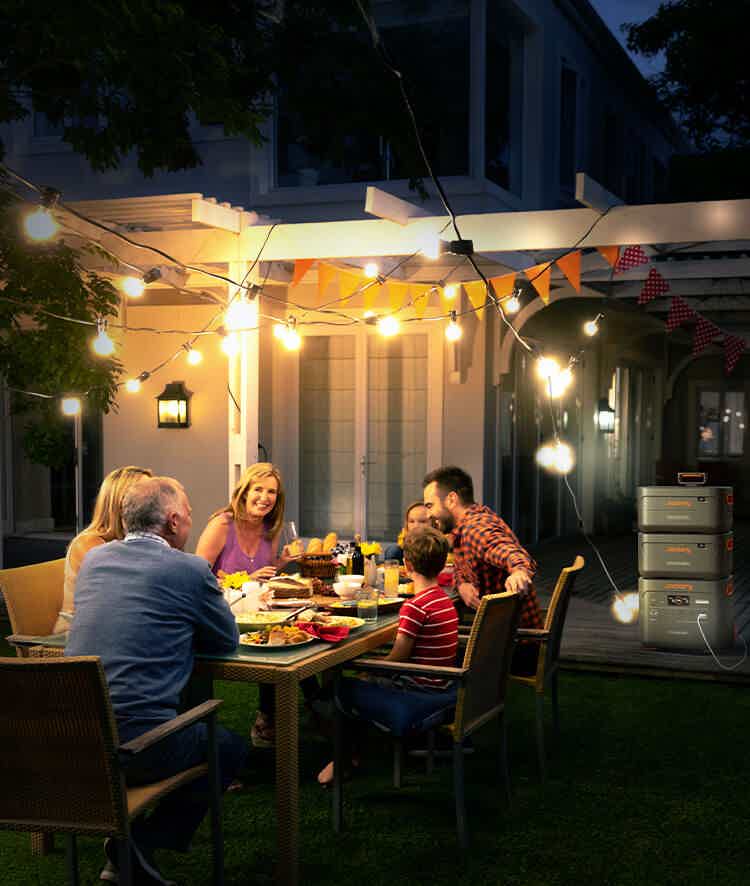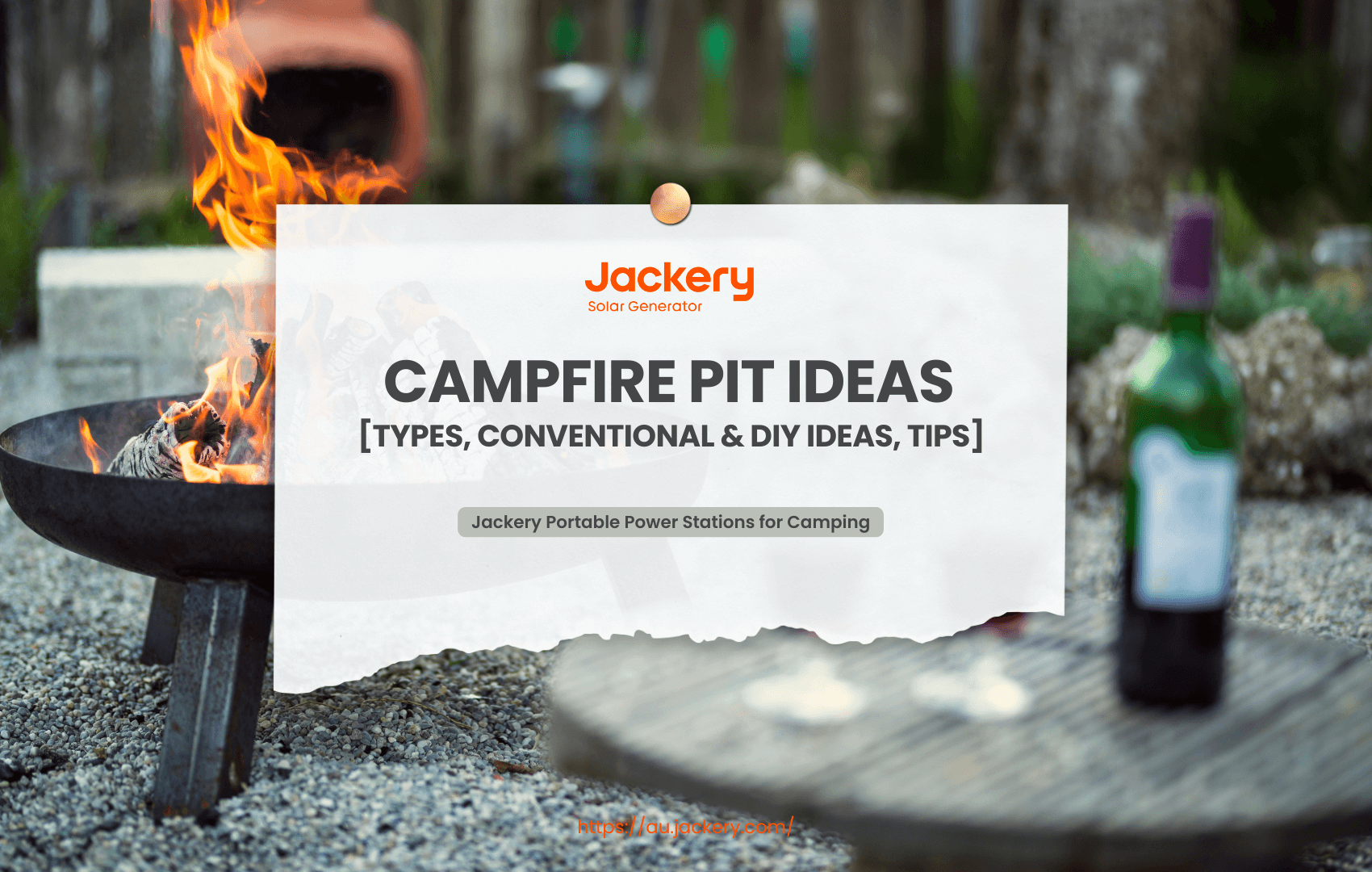|
Key Takeaways: |
|
- Campfire pits are available in a variety of forms, including classic in-ground settings and modern gas fire tables. - DIY options such as washer drums and cinder block fire pits are both inexpensive and environmentally friendly. - Always check local fire prohibitions and permits before starting a campfire in Australia. - Ethanol and gas fire pits are ideal for metropolitan locations with stringent fire laws. - Use only permitted fuels such as hardwood, propane, or ethanol to ensure clean, safe burning. - We highly recommend the Jackery Explorer 1000 v2 portable power station to power the electric grill in your campsite. |
Introduction to Campfire Pit
A campfire pit, which can be a permanent structure made of stone, metal, brick, or temporary ones dug into the ground and surrounded by rocks, is a designated area used for safely building and containing a fire outdoors.
Whether roasting marshmallows or telling stories under the stars, a campfire pit is often the cozy centre of any outdoor experience. Commonly found at campsites, backyards, or parks, a campfire pit helps prevent wildfires while providing a controlled space for warmth, cooking, and social gatherings.
Fire pits have been a symbol of warmth, connection, and the great outdoors for a very long time. They can instantly turn any outdoor living space into a cozy sanctuary. Throughout the course of human history, they have served as a focal point for gatherings, which has been crucial in the development of our emotional connection to fire and the cultivation of a profound sense of camaraderie. These ancient flames, which were once necessary for survival, have now developed into a contemporary luxury amenity for the backyard.
These days, fire pits are not only a source of light and warmth but also a fashionable focus point that can be used for social gatherings and leisure. While exploring the world of fire pits, you will not only rediscover the everlasting fascination of fire and its magnetic draw on the human spirit, but you will also find the most recent trends, styles, and materials that make these wonderful additions to your outdoor living experience.
Types of Campfire Pits
There are various types of campfire pits, each suited to distinct locations and needs. Here are the most popular ones:

In-Ground Campfire Pit
Best For: Traditional camping settings or primitive sites.
Pros: Simple, inexpensive, and natural-looking.
Cons: Less portable; may not be allowed in all areas due to fire regulations.
An in-ground campfire pit is a traditional and straightforward fire pit made by creating a shallow hole in the ground and surrounding it with stones to restrict the flames. This sort of pit is commonly utilised in natural or primitive camping sites without permanent structures.
It has a rustic, back-to-basics feel and is typically made on-site using accessible materials. Though inexpensive and straightforward to construct, it requires careful placement to minimise hazards such as tree roots and dry grass. Always check that it is permitted in your camping location, as certain parks and forests have fire restrictions.
Above-Ground Fire Pit (Permanent)
Best For: Backyards or designated fire areas.
Pros: Durable, decorative, and safer with proper construction.
Cons: Not portable; requires installation.
The raised design of permanent above-ground fire pits improves airflow for combustion and increases safety by keeping flames off the ground; installations may require planning or professional assistance, but once constructed, they become a focal point for entertaining and relaxation.
Usually built from long-lasting materials like stone, brick, or concrete, these pits are intended to be long-lasting outdoor features. They are frequently found in landscaped backyards or communal camping areas.
Portable Fire Pit
Best For: Camping trips, patios, or renters.
Pros: Lightweight, easy to transport, and often comes with screens or grills.
Cons: Can be less stable on uneven ground.
A favourite among those who love convenience and outdoor adventure, portable fire pits are lightweight metal structures that are easy to transport and set up at different locations, making them perfect for campers and travellers.
They come in various designs, such as bowl, square, or collapsible, and frequently have features like grills, ash catchers, or spark screens. These pits provide the warmth and atmosphere of a traditional campfire without requiring the digging or construction of a fire ring, and they are ideal for use in areas designated as fire-safe zones.
Propane or Gas Fire Pit
Best For: Areas with fire bans or for cleaner, smoke-free fires.
Pros: Easy to light and control; no ashes or wood needed.
Cons: Lacks the "crackling fire" ambience; requires fuel.
Wood fires can be replaced with clean, contemporary propane or gas fire pits. With a knob or switch, these pits are simple to light and manage. Portable propane tanks or natural gas lines can power them. Because they emit no smoke and provide steady heat, they are ideal for patios, decks, and locations where fire is prohibited because of the dry weather.
Although they don't have the wood fire's rustic beauty and crackling, they are safer, less maintenance-intensive, and better for the environment. Certain types can also be used as tables or accent items.
Tabletop Fire Pit
Best For: Ambiance in small outdoor spaces.
Pros: Compact, stylish, and safe for small gatherings.
Cons: Low heat output, not for cooking or large gatherings.
Typically powered by gel or ethanol, tabletop fire pits are small, ornamental devices intended to be placed on a table or other small surface. They are ideal for small patios, balconies, or indoor-outdoor areas where a full-sized fire pit wouldn't fit because they are mainly used for atmosphere rather than heat.
With genuine flame and no smoke, ash, or intense heat, these pits produce a warm and inviting ambience. They provide a chic and portable option for anyone wishing to incorporate a fire element into their décor, and they are safe and straightforward to use for small parties.
Top Campfire Pit Ideas: Conventional and DIY
If you are looking for ideas for campfire pits to give atmosphere and warmth to your outdoor settings, we have some thought-provoking ideas for you, as well as some advice on how to choose the style of campfire pit that would go best with your landscaping style.
Conventional Campfire Pit Ideas
Cast Iron Fire Pits: Fire pits made of cast iron are renowned for their durability and ability to retain heat exceptionally well. Being able to provide warmth during the cooler evenings makes them a perfect choice for backyards in Australia. Their timeless design is in perfect harmony with a variety of outdoor settings.
Steel Fire Bowls: Steel fire bowls have a contemporary appearance and are frequently portable due to their low weight. They offer adaptability for various tastes because they may be used with gas and wood-burning choices.
Gas Fire Pit Tables: Functionality and aesthetics are brought together in gas fire pit tables, which serve as both a table and a source of fireplace heat. Since they can be shut off instantaneously and do not emit embers, they are an excellent choice for locations with fire restrictions.
Sunken Fire Pits: It is possible to integrate fire pits into the ground, resulting in a streamlined and unobtrusive design. It is possible to line them with stone or brick, and they are perfect for establishing a warm and inviting meeting place.
Ethanol Fire Pits: Ethanol fire pits are suitable for use in urban settings since they do not produce smoke and provide a clean burning environment. The chimney or flue is not necessary for their installation, and they are available in various designs, ranging from tabletop units to bigger installations.
Chiminea: Chimineas are freestanding fireplaces that funnel smoke upward, making them safer for use in areas with limited space or windy conditions. Chimineas were traditionally built of clay but are now frequently made of steel or cast iron. It is necessary to have stable ground and fire-safe clearance zones to use them, but they are excellent for patios or decks.
Modular Gas Fire Pit System: Systems of the highest quality that have a fire pit along with built-in seating, storage, or preparation facilities. These are ideal for hosting gatherings and can be included in a larger outdoor kitchen or lounge arrangement. They burn cleanly and are safe, and they are becoming increasingly used in the construction of luxury homes around Australia.
Portable Campfire Pit with Grill: The foldable or small fire pits with an integrated cooking grate are essential for campers to have by their side. Ozpig and Jumbuck are two popular brands in Australia. These fire pits are designed to withstand harsh circumstances and are suitable for use in campgrounds (where permitted).
Concrete Fire Pit: These are contemporary fire pits that are simple in design and are typically made to order or purchased in pre-cast forms. They are suitable for both wood and gas fuel sources and work effectively to retain heat. Excellent for high-end residential landscaping, particularly in cities like Melbourne and Sydney, where the tendency toward contemporary design is prevalent.

DIY Campfire Pit Ideas
Brick Fire Pits: Brick fire pits are simple to construct independently. Bricks are long-lasting and can be stacked in various configurations to complement your outdoor space's design. Use bricks recovered from abandoned buildings or construction sites to create a stunning fire pit. Create a square or a circular shape. It is possible to add a touch of heritage to your environment cost-effectively.
Cinder Block Fire Pits: Cinder blocks are a popular choice for do-it-yourself fire pits, given their low cost and the ease with which they can be stacked. It is possible to arrange them in a square or rectangular configuration, and they can be modified with paint or stucco.
For a fire pit that is either square or rectangular in shape, stack cinder bricks. Because mortar is not used, it is simple to construct and transport. Despite the fact that it might not be the most aesthetically pleasing option for manicured areas, it is a solution that is favourable to the wallet for large properties.
Washer Drum Fire Pits: A fire pit that is both one-of-a-kind and practical may be made by repurposing an old drum from a washing machine. It is possible to achieve a robust fire because of the perforations in the drum, which allow for great ventilation.
Bricks or a metal frame can be used to elevate the drum of an old washing machine after it has been successfully removed. The holes allow for a great movement of air, which results in a burn that is both hot and efficient. An excellent upcycled project is also suitable for use in off-grid or farm-based environments.
Stone Circle Fire Pits: In order to create a circular fire pit that is in perfect harmony with outside sceneries, natural stones should be gathered if possible. In addition to being economical, this rustic approach is also helpful to the environment.
Creating a shallow pit and lining it with fireproof materials such as gravel, sand, or natural stone is a straightforward step with a rustic appearance. A barrier can be constructed around the pit using rocks or bricks. It blends well with natural bushland or rural properties and is most appropriately utilised in areas where municipal restrictions permit open-ground fires.
Gabion Fire Pits: The construction of Gabion fire pits involves filling wire cages with stones, resulting in a durable and aesthetically pleasing structure. Compared to more conventional fire pit designs, they provide a contemporary twist.
After constructing a gabion, a cage made of wire mesh, and filling it with stones, you should line the inside with a fireproof insert. In addition to being visually attractive, it is pretty stable and is a good choice for homes with contemporary outside landscaping. This kind of thing frequently happens to become a topic of discussion.
Wheel Rim Fire Pit: Traditional steel rims for tractors and trucks are exceptionally long-lasting and naturally fire-resistant. The legs can be welded onto the rim, or it can be placed in a gravel bed. The form of the object ensures that the fire is contained, making it an ideal choice for paddocks, camping places, or farms.
How to Choose Fuel For Your Campfire Pit?
Your fire pit's lifespan, safety, and correct operation all depend on the fuel you use. Inadequate heat, excessive smoke, and even damage to your fire pit might result from using the incorrect fuel. Your fire pit's style will determine the kind of fuel you require. Here is a quick rundown of the top fuel choices for different types of campfire pits:

Wood: By choosing hardwoods such as oak, hickory, and maple, you may create a hotter fire, which lasts longer and produces less smoke. Avoid wood that has been treated or painted, as well as green or moist wood.
Propane and Natural Gas: For fire pits that only use propane, use liquid propane, and for fire pits that use natural gas, use natural gas. Never combine the two different kinds of gas.
Gel Fuel and Ethanol: If you want a fire that burns cleanly and doesn't produce any scent, the manufacturer recommends using a particular fuel based on alcohol.
Charcoal: The option to purchase charcoal briquettes or lump charcoal is available. In order to ignite the charcoal, you should avoid using lighter fluid.
Safety & Maintenance Tips for Campfire Pits
Due to the stringent fire rules and high risk of bushfires in many areas, safety and upkeep are crucial while utilising a campfire pit in Australia. Even for little confined fires, many Australian campgrounds now require fire permits, which can be applied online via local fire authorities' websites or by asking the site manager.
Safety Tips for Campfire Pits
Tip 1: Check Local Fire Bans and Regulations
Verifying local laws is the first step towards safety when utilising a campfire pit in Australia. Always get advice from your local council, state fire authority (e.g., DFES in Western Australia, RFS in New South Wales, CFA in Victoria), or campsite regulations.
Even in designated pits, lighting a fire on days when there is a total fire ban is legally forbidden. Additionally, you should be very aware of Fire Danger Ratings because, depending on the weather and fuel loading, even small or controlled fires may be prohibited on high-risk days.
Tip 2: Use Designated Fire Pits
Always using approved fire pits when camping in public campgrounds or national parks is crucial. These fire pits are built and positioned especially for safety. Building your own fire pit is typically discouraged unless specifically authorised and carried out in a secure setting.
Tip 3: Clear the Area
Remove any flammable objects from the vicinity of the fire pit, such as sticks, dried leaves, or grass, before starting a fire. A minimum three-meter safety buffer is advised. Using bare dirt or a circle of non-flammable stones to create a firebreak helps contain stray embers and provides an additional layer of safety.
Tip 4: Supervise the Fire at All Times
Fires need to be watched over constantly. Never, ever leave a campfire unattended, even for a short time. Protecting kids and pets from the pit is important to prevent mishaps or burns. Sustained supervision guarantees prompt management of any flare-ups or wind-blown embers.
Tip 5: Have Fire-Extinguishing Tools Ready
Keep fire extinguisher supplies close at hand at all times. In addition to a shovel or fire extinguisher, a bucket of water is necessary for promptly containing unforeseen flare-ups. In the absence of water, the fire can be safely put out by smothering the flames with sand or earth.
Tip 6: Extinguish the Fire Properly
It's essential to carefully extinguish the fire after utilising your campfire pit. Add enough water to cover the fire completely, stir the ashes, and add more until everything feels cold. Never leave a fire site until you are positive it is entirely extinguished because hot coals or embers can rekindle and start bushfires if left alone.

Maintenance Tips for Campfire Pits
Tip 1: Clean Out Ashes Regularly
Campfire pit upkeep is also essential for safe and efficient use. Remove ashes and trash after every use to ensure adequate airflow and avoid clogging. Cooled ashes should be disposed of properly in a metal container to prevent fire threats.
Tip 2: Inspect for Damage
Check for damage regularly, especially if your fire pit is portable or made of metal. To ensure safety, check for loose bolts, cracks, or rust. If you're using a brick or stone pit, look for indications of shifting or cracking stones because they could collapse and let flames escape.
Tip 3: Protect from the Elements
Protecting your campfire pit from the weather will allow it to last for a more extended period of time. In order to protect it from rain and moisture, which can lead to rust in metal pits, you should use a cover that is resistant to the elements. When not in use, portable pits should be stored in a dry and sheltered area to prevent long-term harm.
Tip 4: Use the Right Materials
Additionally, it is vital to burn only safe things. Not only are treated wood, plastic, and rubbish from the household harmful when burned, but it is also frequently against the law to use them in fires set outside. In order to maintain a fire that is both safe and kind to the environment, you should only use charcoal, seasoned firewood, or other permitted fuels.
Tip 5: Respect Wildlife and the Environment
One last thing to keep in mind is always to show respect for the natural environment. Food scraps should never be burned since they can encourage the presence of wildlife and leave behind toxic residue.
Additionally, it is important to refrain from taking firewood from national parks or conservation areas because doing so might cause damage to the habitats. Instead, you should always bring your own supply of firewood.

Jackery Portable Power Station Explained
While a Jackery Portable Power Station is fantastic for powering lights, charging devices, and even running some appliances while camping, it cannot directly create a traditional campfire.
A campfire relies on the combustion of organic materials like wood, which generates heat and light through a chemical reaction. A Jackery, on the other hand, stores electrical energy in a battery and outputs it through its various ports.
However, you can use a Jackery Portable Power Station to enhance your campfire experience or provide a safer, electricity-powered alternative for heat and light.
You can power an electric lighter or a small electric charcoal starter with your Jackery to help ignite kindling and get your traditional wood fire going more easily and safely than with matches alone, especially in windy conditions. A small USB-powered fan, run by your Jackery, can help increase airflow to your kindling, making it catch fire more quickly. Be cautious not to blow ashes around once the fire is established.
Powering bright and efficient LED camp lights with your Jackery ensures you have ample illumination around your campfire area for safety, cooking, and socialising long after the flames die down. This is much safer than relying solely on the firelight, especially when moving around. You can create a cozy and festive atmosphere by powering string lights around your campsite with your Jackery.
Jackery Explorer 1000 v2
The Jackery Explorer 1000 v2 Portable Power Station is engineered for mobile energy solutions. Weighing about 23.8 lbs and equipped with a compact foldable handle, it is more lightweight and portable than conventional items. Besides, it is 20% smaller and 10% lighter than mainstream products. This powerhouse conveniently fits into the back compartment for effortless storage, guaranteeing you are never without power.

Jackery's upgraded Power Station exhibits a 50% enhancement in power output compared to the previous Explorer 1000 model, with an AC output of 1500W. It charges 7.5 times faster, achieving a full charge in just 59 min through the Jackery App. The LiFePO4 battery exhibits a lifespan four times greater than conventional batteries, supporting 4,000 life cycles while maintaining over 70% of its capacity.
With a robust 1500W AC output and a surge peak of 3000W, this device can support various home appliances during an emergency, including refrigerators, lights, radios, medical equipment, etc. The device includes 100W PD Fast USB-C charging (both input and output) for efficient recharging, possesses a substantial 1070Wh capacity, and is designed in a compact size to optimise space utilisation.
The Jackery Explorer 1000 v2 offers rapid charging capabilities, achieving a full charge in 60 minutes when utilised with the accompanying application. The ChargeShield 2.0 system provides 62 types of safety protection and is CE-certified. It features comprehensive fire and shock resistance to ensure quality and optimal safety.
|
Camping Appliances |
Running Time |
|
Electric Charcoal Starter (550W) |
1.6H |
|
Portable Fan (30W) |
19.5H |
|
Camping Light (5W) |
43.9H |
|
Electric Grill (800W) |
1.1H |
|
Portable Fridge (100W) |
7.6H |
(*The working hours are only for reference; the actual working hours depend on your usage.)
Campfire Pit Ideas FAQs
The following are the frequently asked questions about the campfire pit ideas.
1. What is the cheapest way to make a fire pit?
Building a do-it-yourself in-ground fire pit out of natural or recycled materials is the least expensive option to create a fire pit in Australia. For drainage and fire safety, this entails excavating a small hole in your backyard and filling it with sand or gravel.
Reclaimed bricks, stones, or concrete pavers can then be used to round the pit; these materials are frequently available for free or at a reduced cost from nearby demolition sites, Facebook Marketplace, or recycling facilities. This approach is economical, eco-friendly, and fits in well with Australian outdoor areas. Before beginning construction, review the fire safety guidelines and standards set forth by your local council.
2. Are fire pits legal in Australia?
Despite the fact that fire pits are legal in Australia, their use is subject to numerous regulations imposed by state and local governments. It is essential to review the laws governing your community to ensure compliance.
3. What is the best thing to burn in a fire pit?
The traditional option for fires is open to the air. After being kiln-dried and cut into logs that are the perfect size for most fire pits, hardwood purchased online is typically in this condition. It is also recommended that you replenish your supply of bags of kindling at the same time.
4. What is a good bottom for a fire pit?
We make use of a gravel paver base to offer a foundation for the fire pit that is both secure and long-lasting. Furthermore, concrete slabs, sand, lava stones, dirt, and fire glass are all materials commonly used for the bottom of a fire pit.
5. What is the best material to put under a fire pit?
The best material to place beneath a fire pit is a heat-resistant, non-flammable base, like fire bricks, lava rocks, paver sand, or gravel. To keep the earth underneath from being harmed, these materials assist in dispersing heat, encourage drainage, and offer stability.
Using a gravel paver base is particularly efficient and economical for portable or do-it-yourself fire pits, especially in areas where fire safety is crucial and bushfires are common. Avoid utilising grass surfaces, untreated wood, or ordinary concrete, as these can burn, crack, or cause a fire. Every base should adhere to the municipal council's fire safety regulations.
Final Thoughts
Choosing the ideal campfire pit requires balancing safety, style, usefulness, and your outdoor lifestyle. From sophisticated gas fire pit tables to rustic washing drum DIY projects, Australia has plenty of alternatives for homeowners, campers, and renters. Whether you're looking for a permanent garden feature or a movable bushfire-safe design, the concepts presented here are practical, fire-safe, and full of character. With the right equipment, fuel, and regular care, your fire pit may become a long-lasting, pleasurable component of your outdoor environment.

